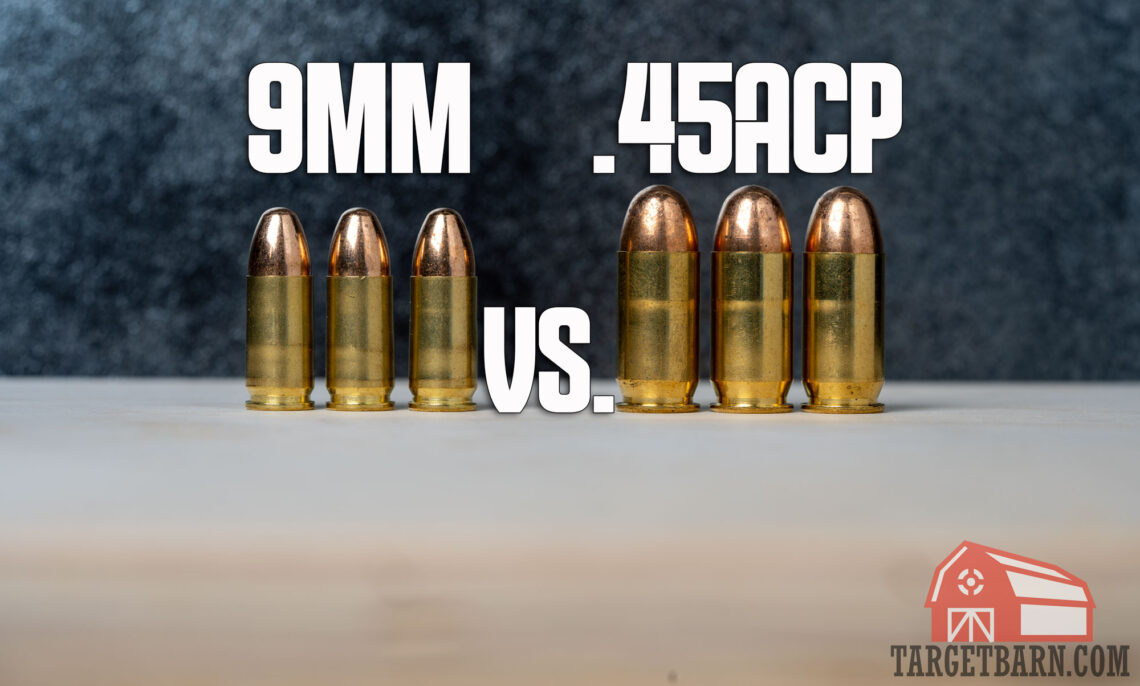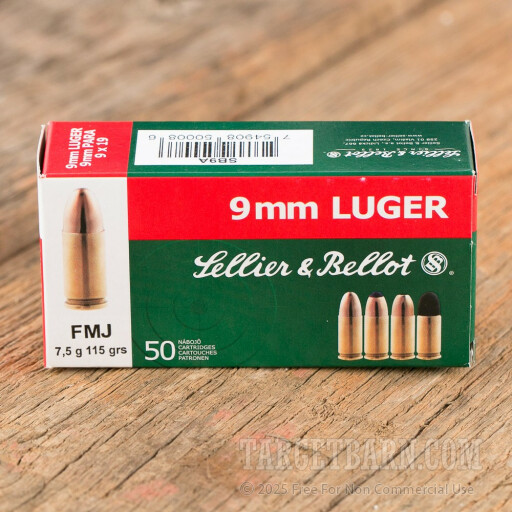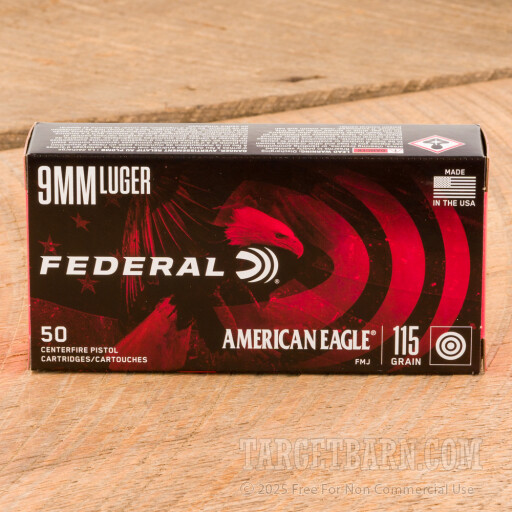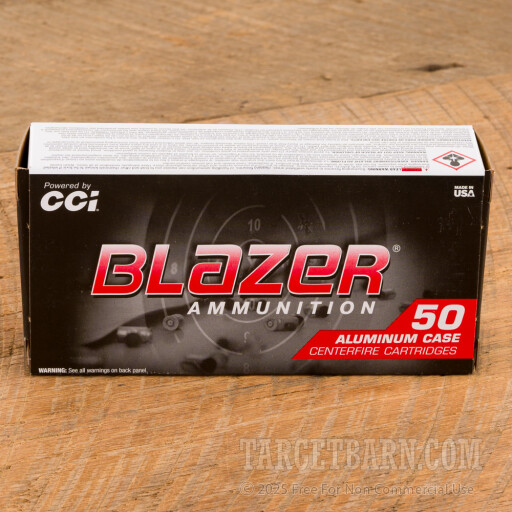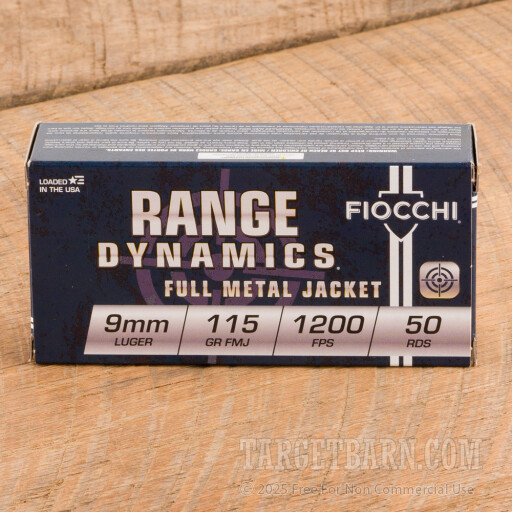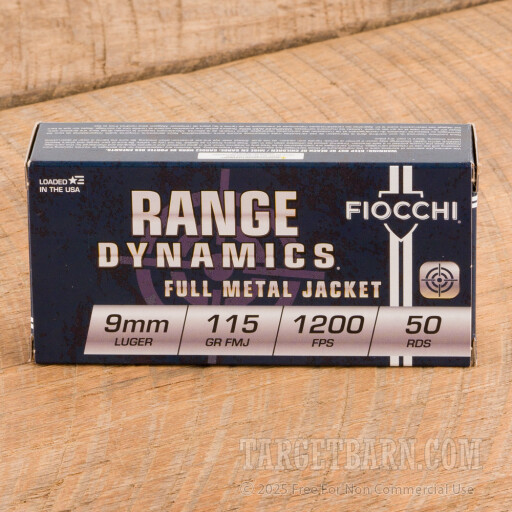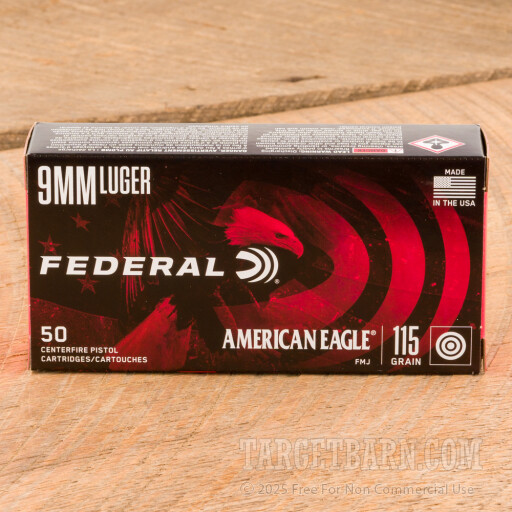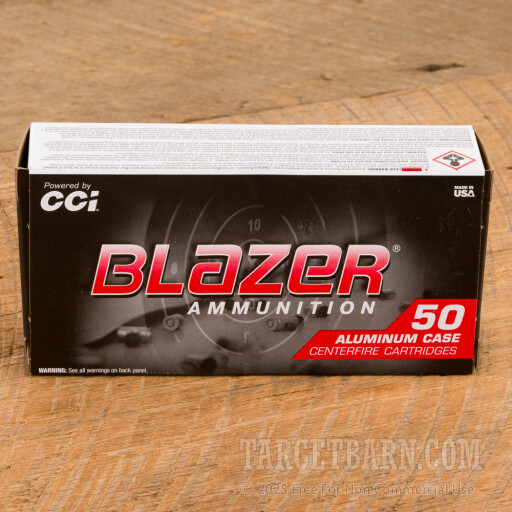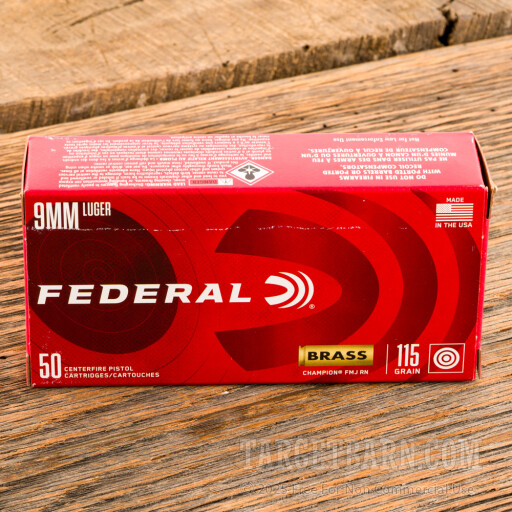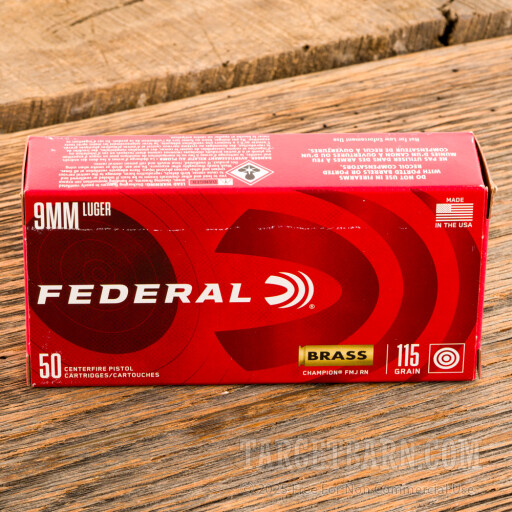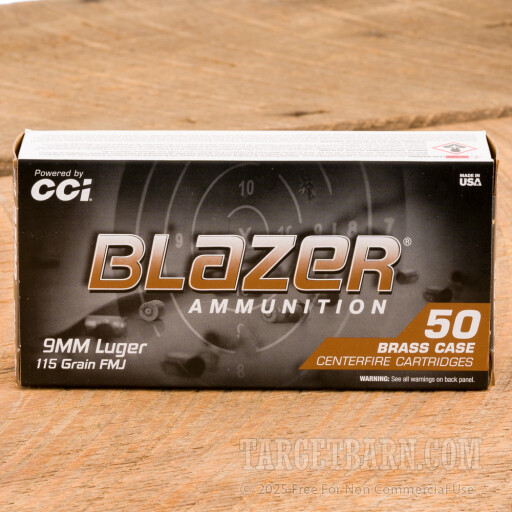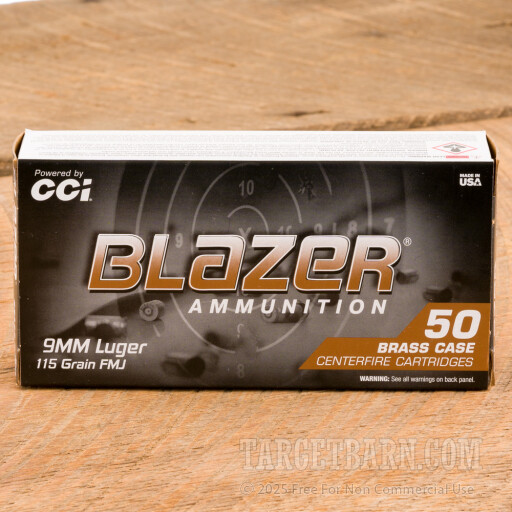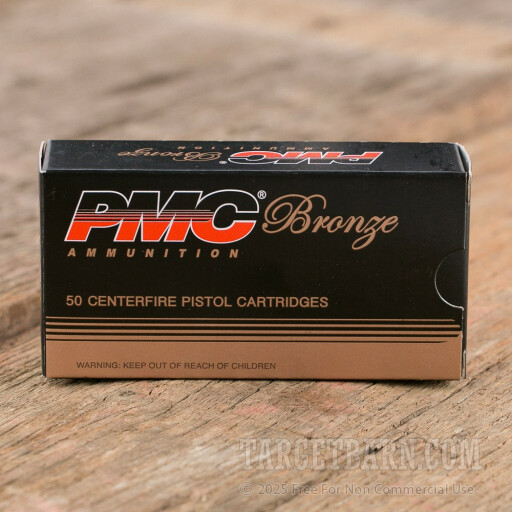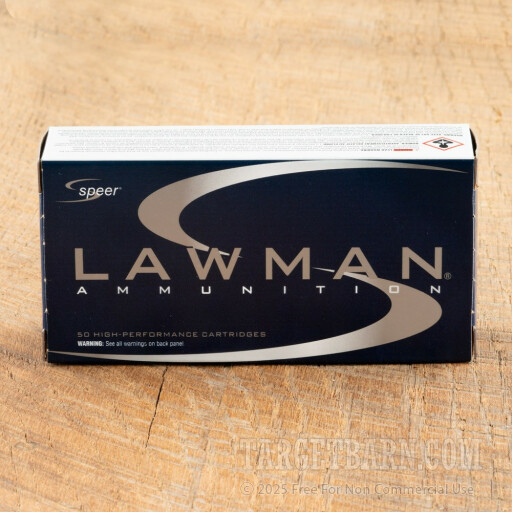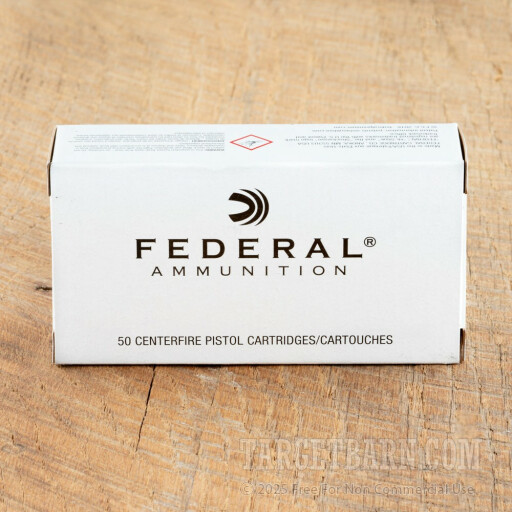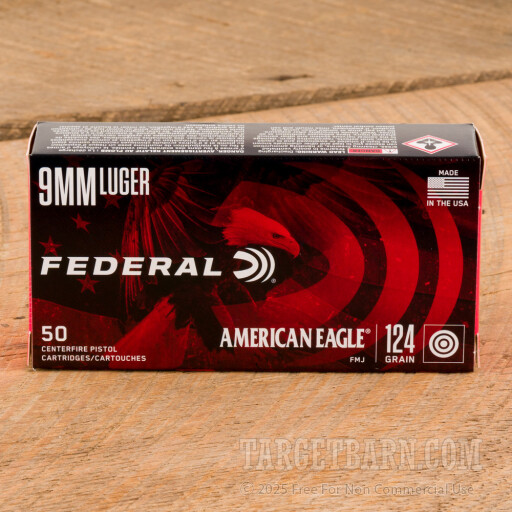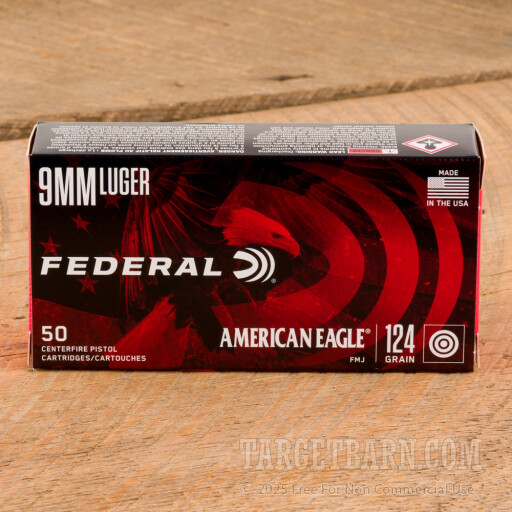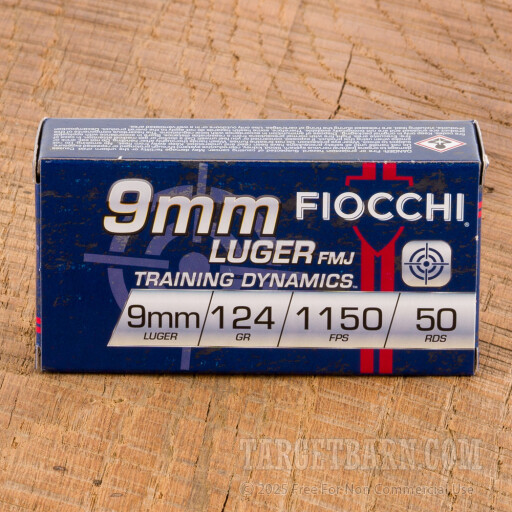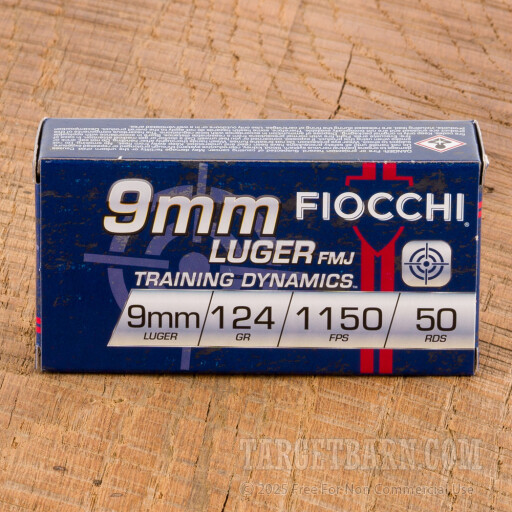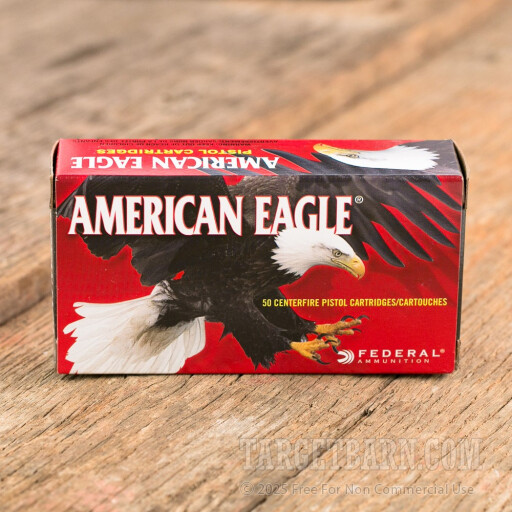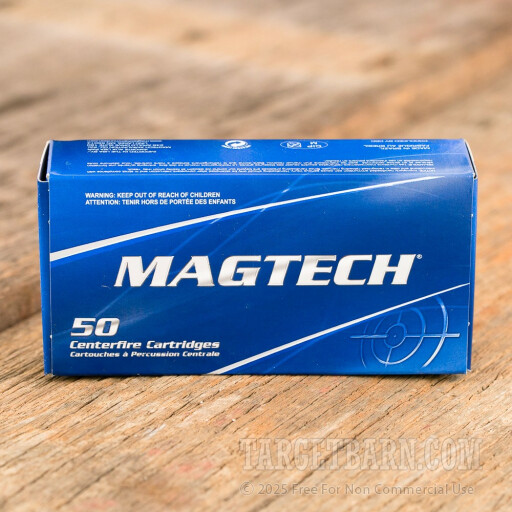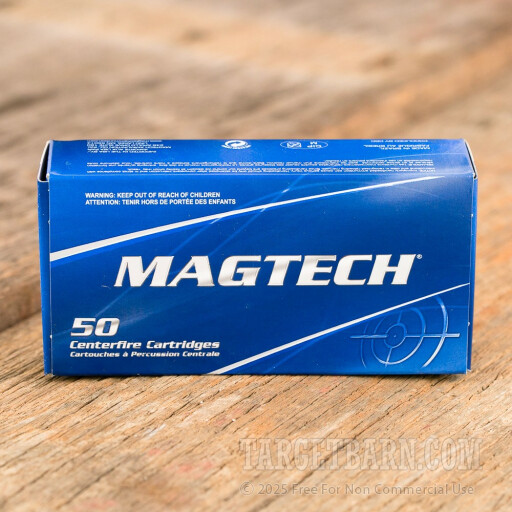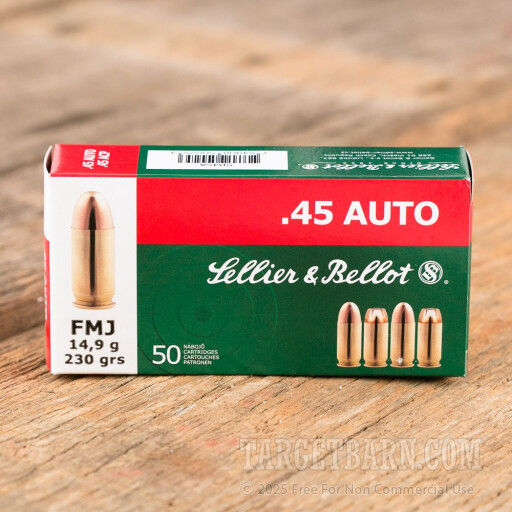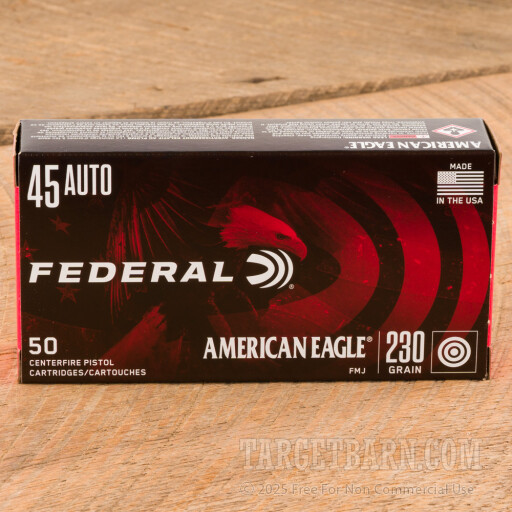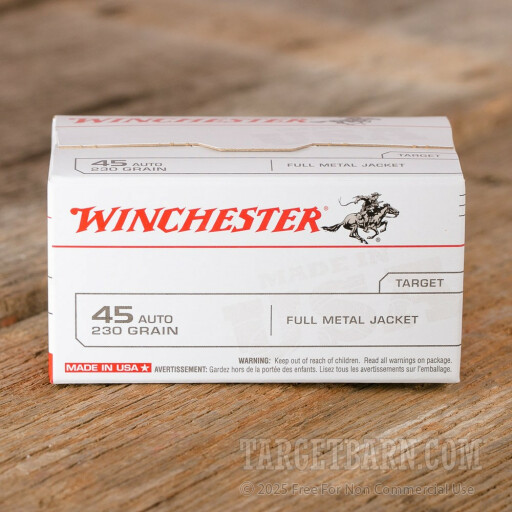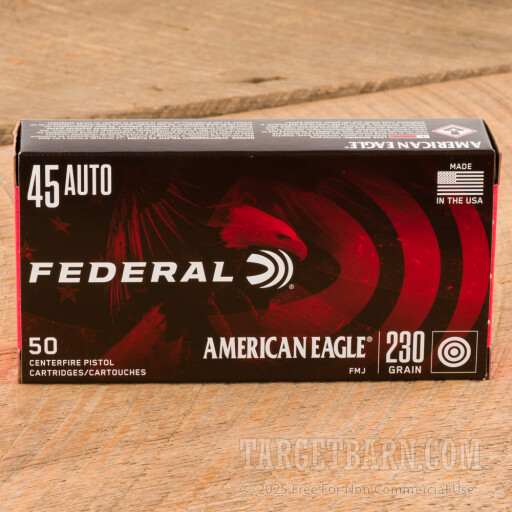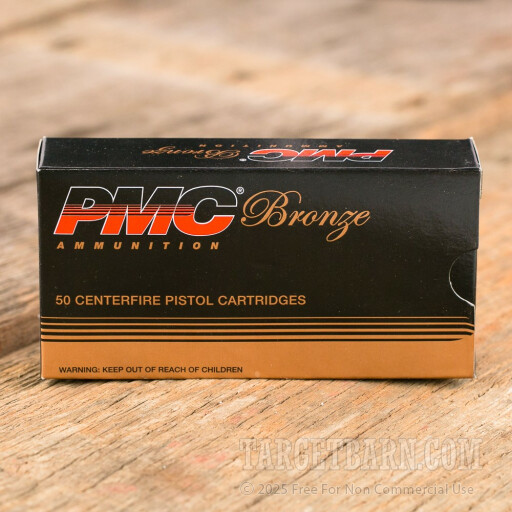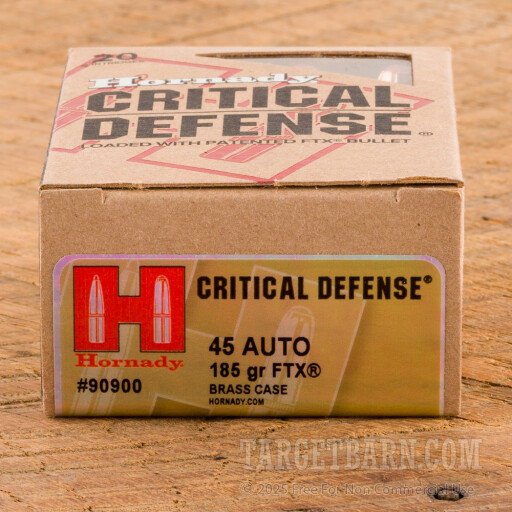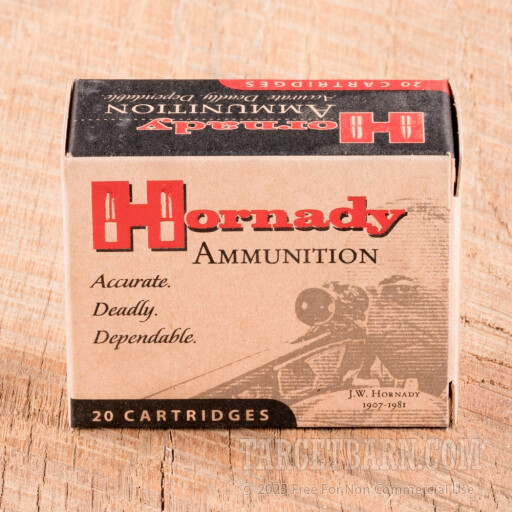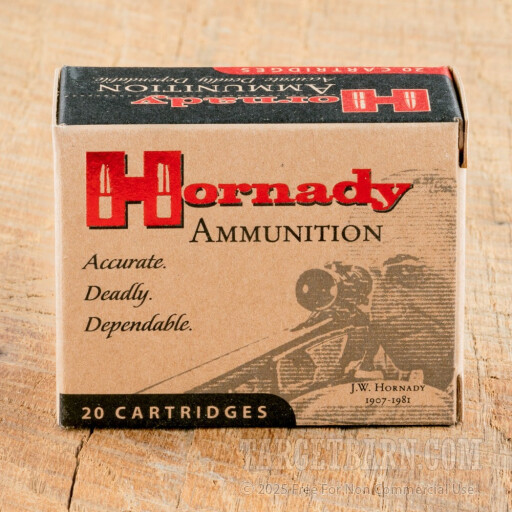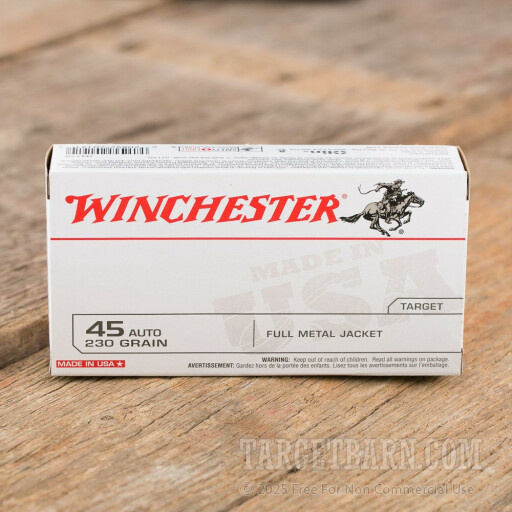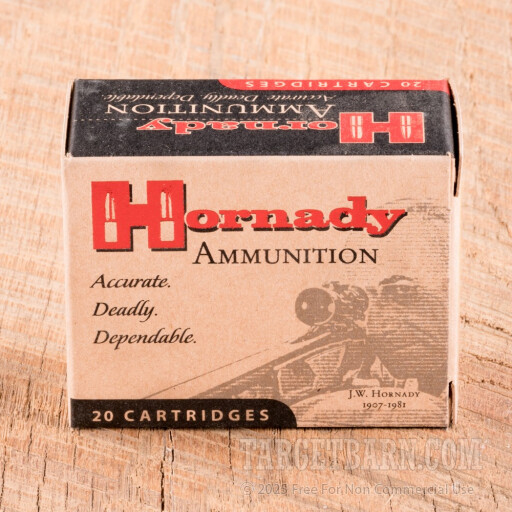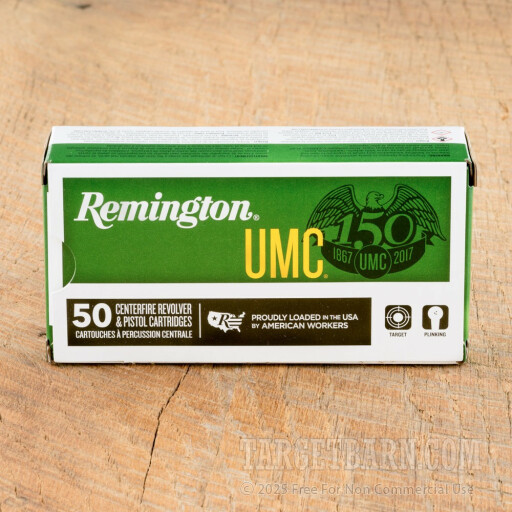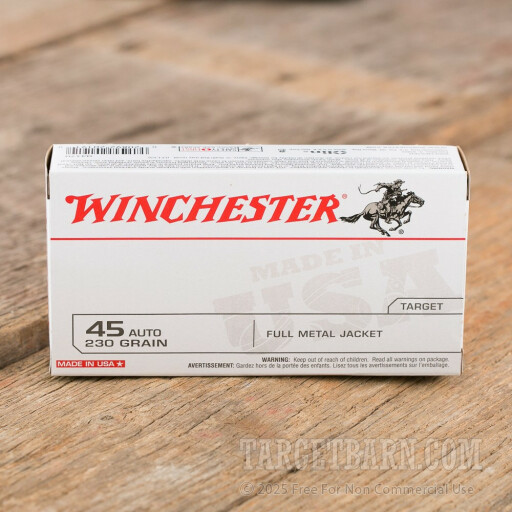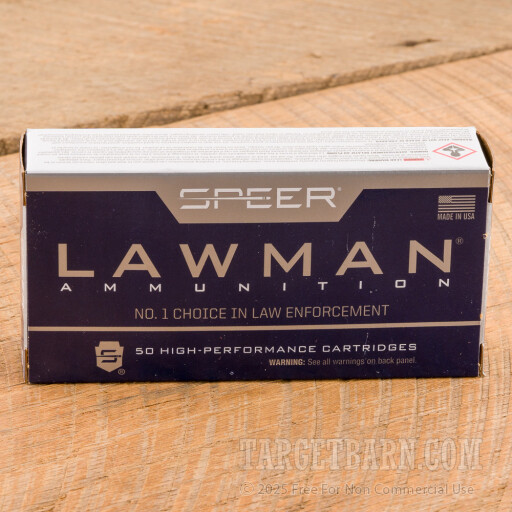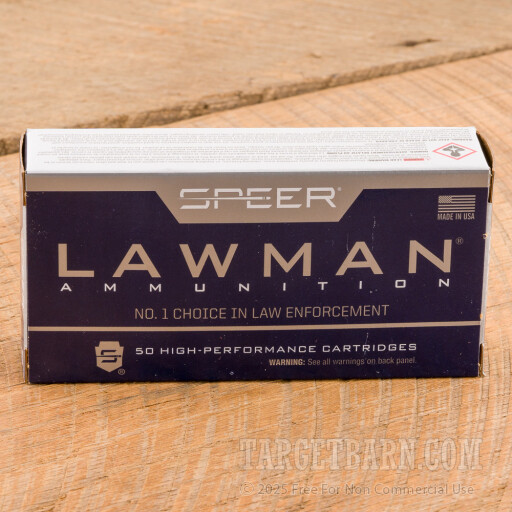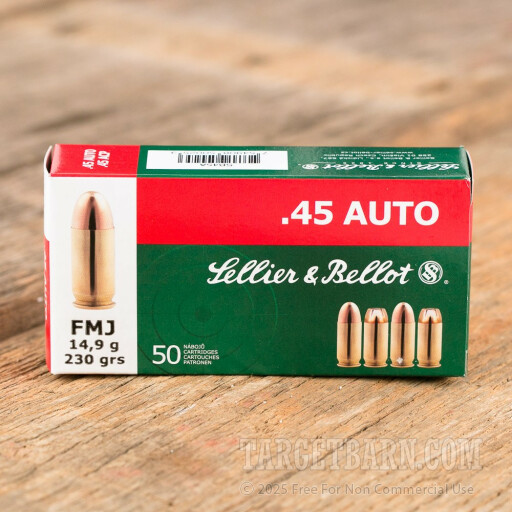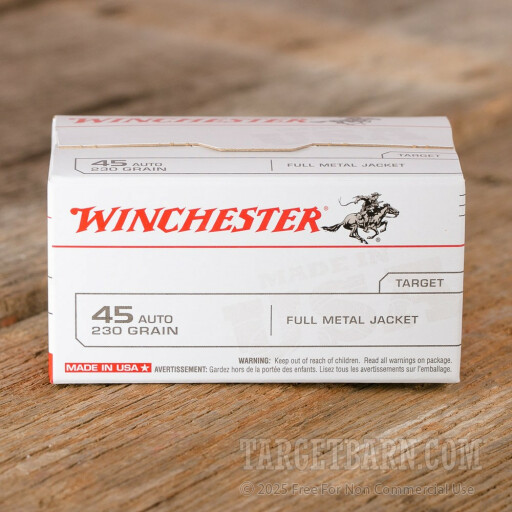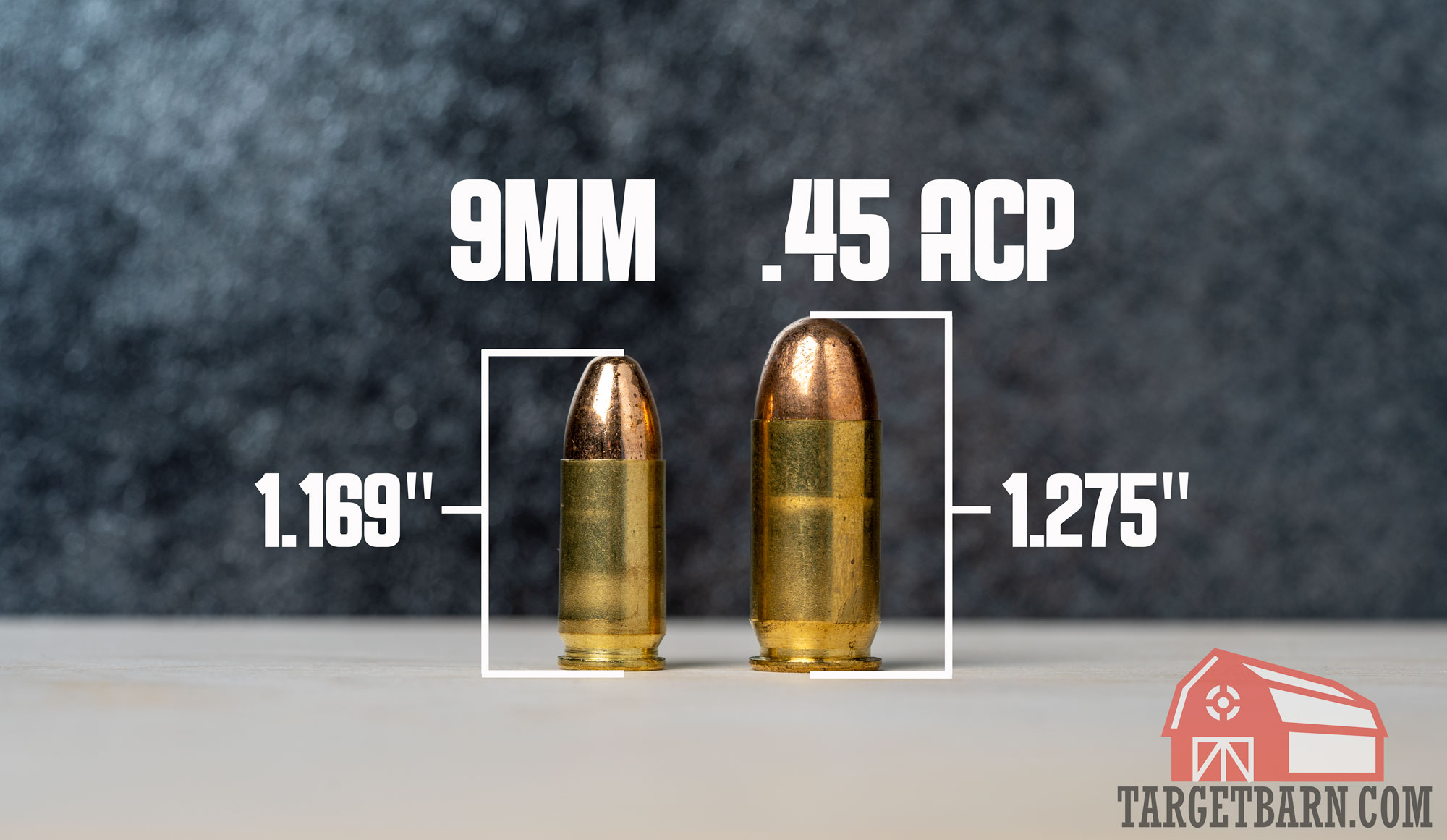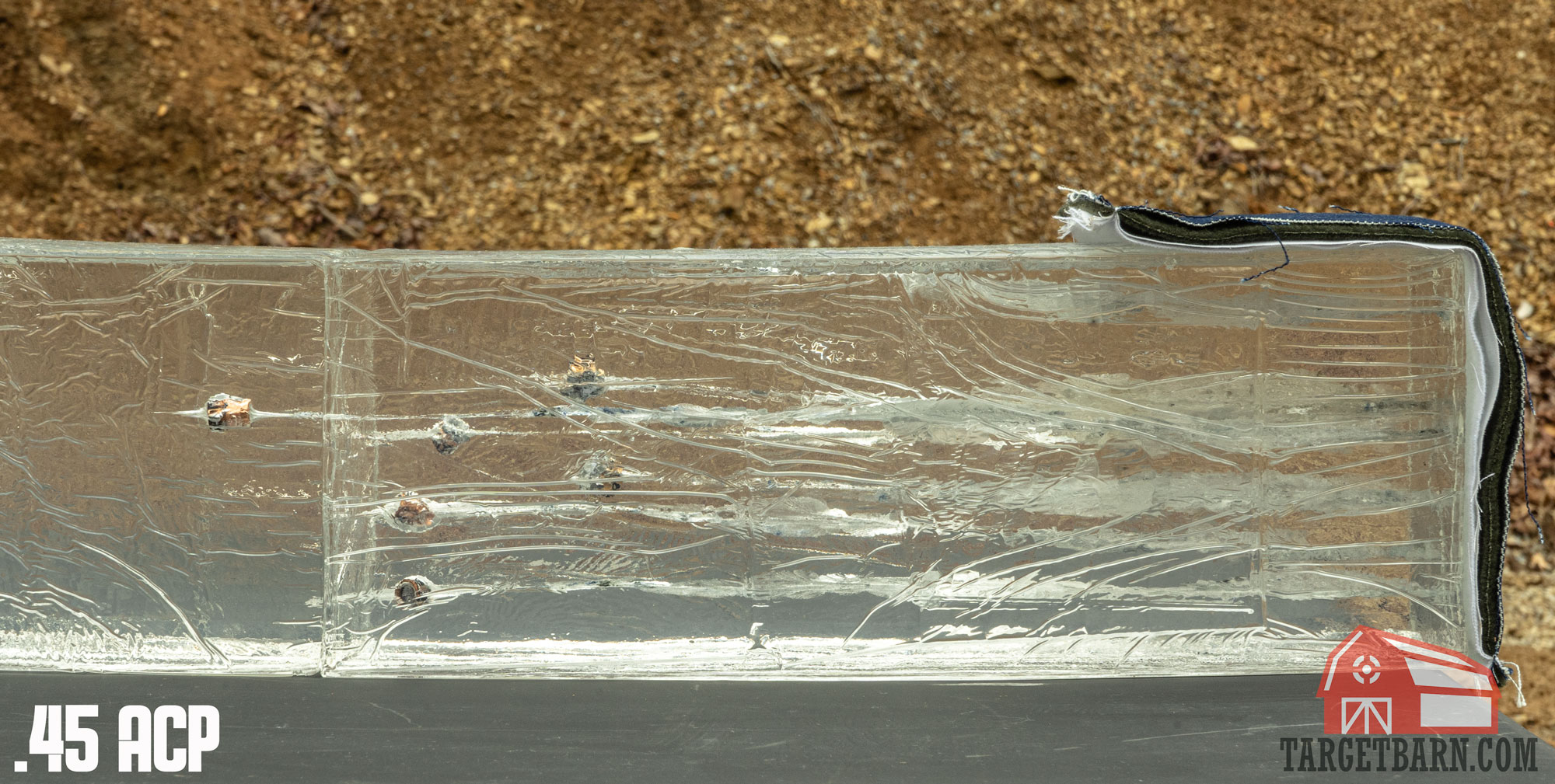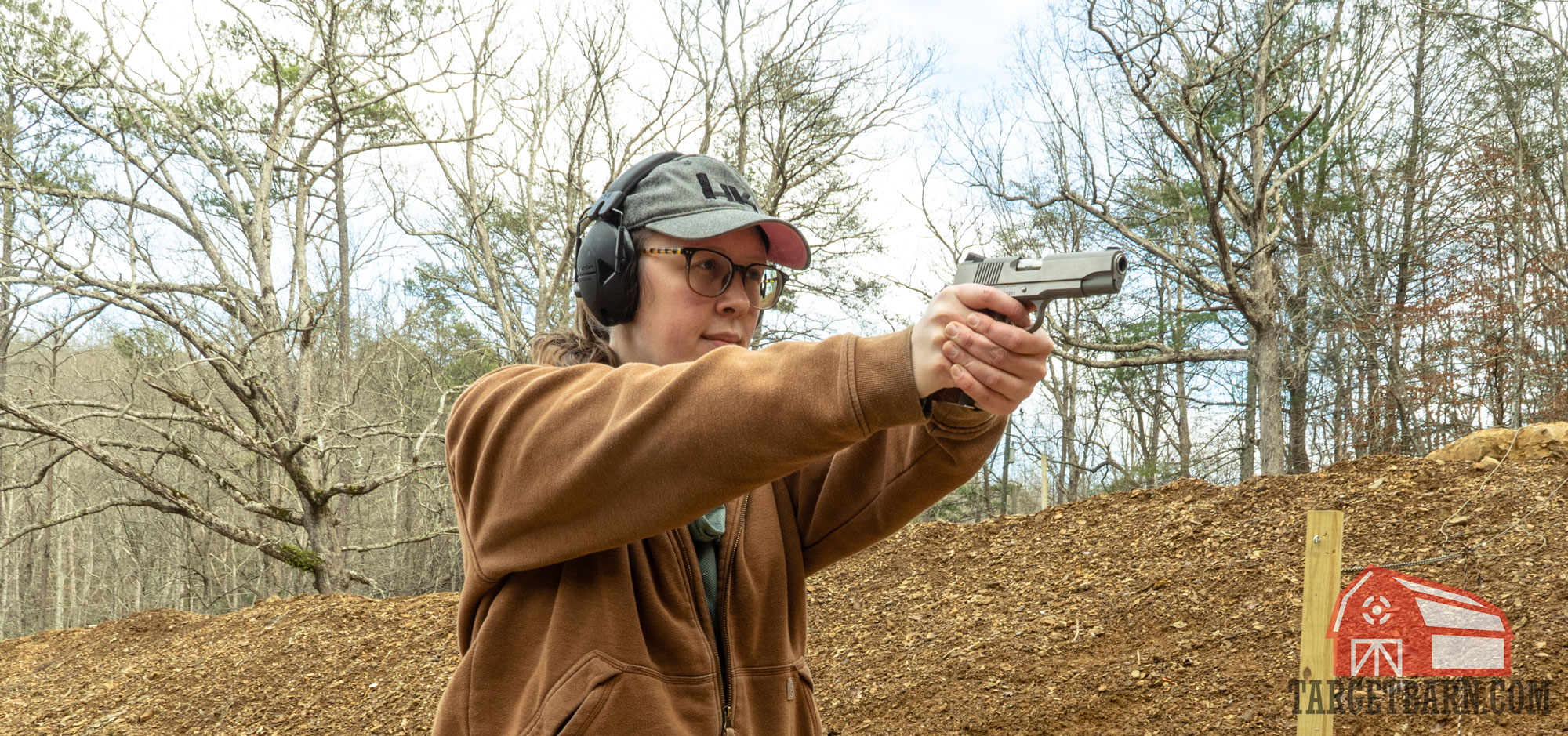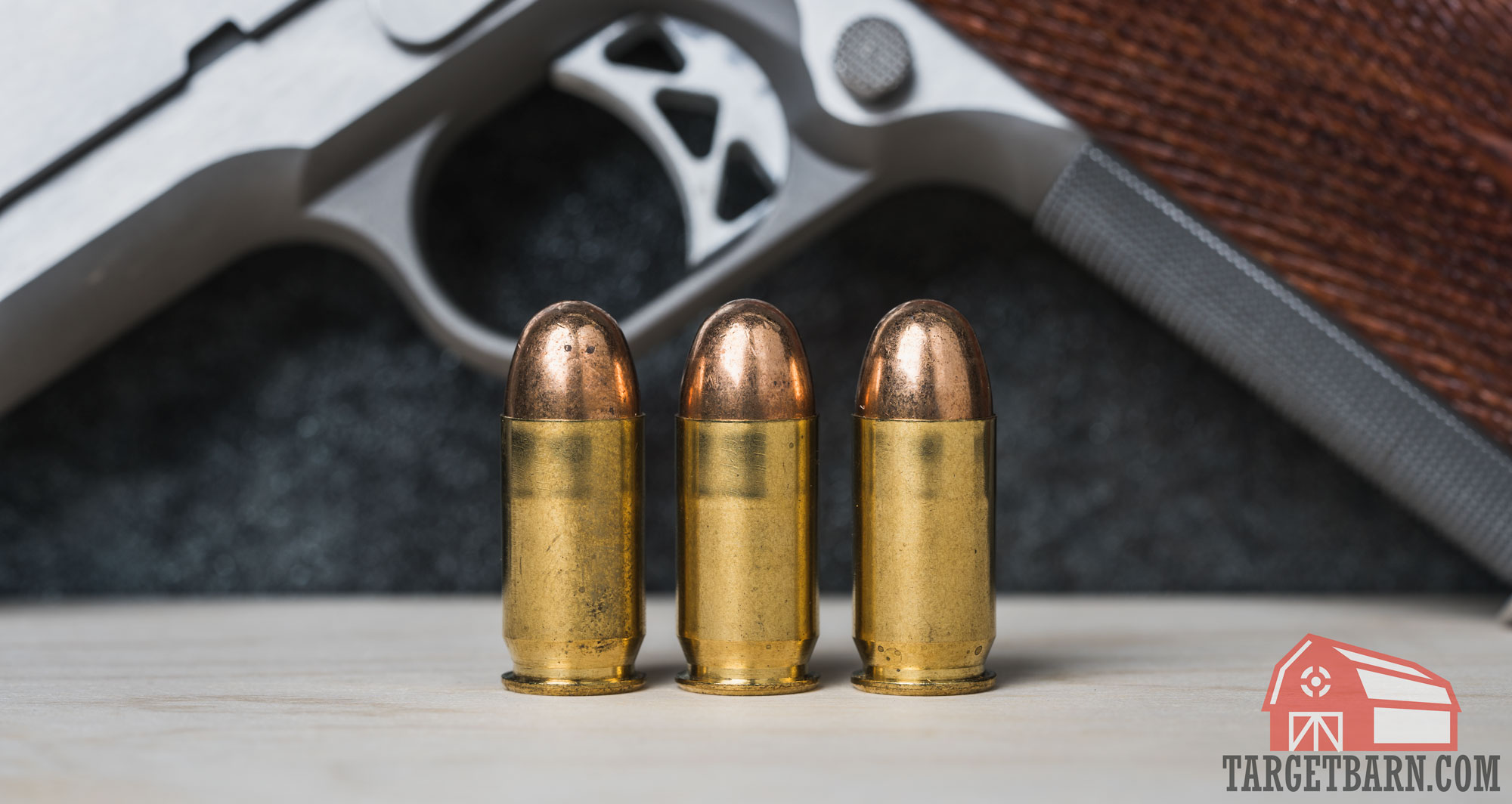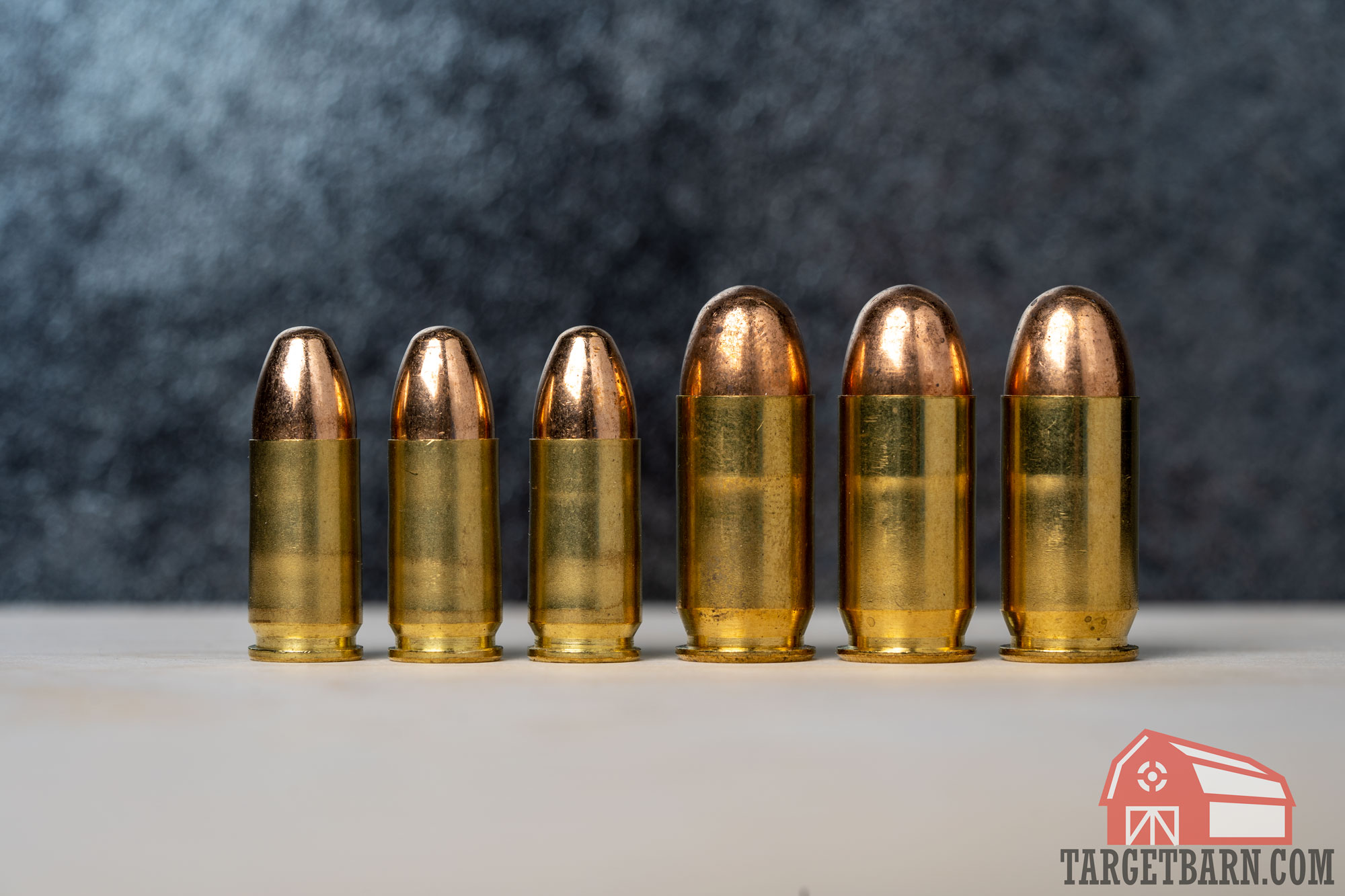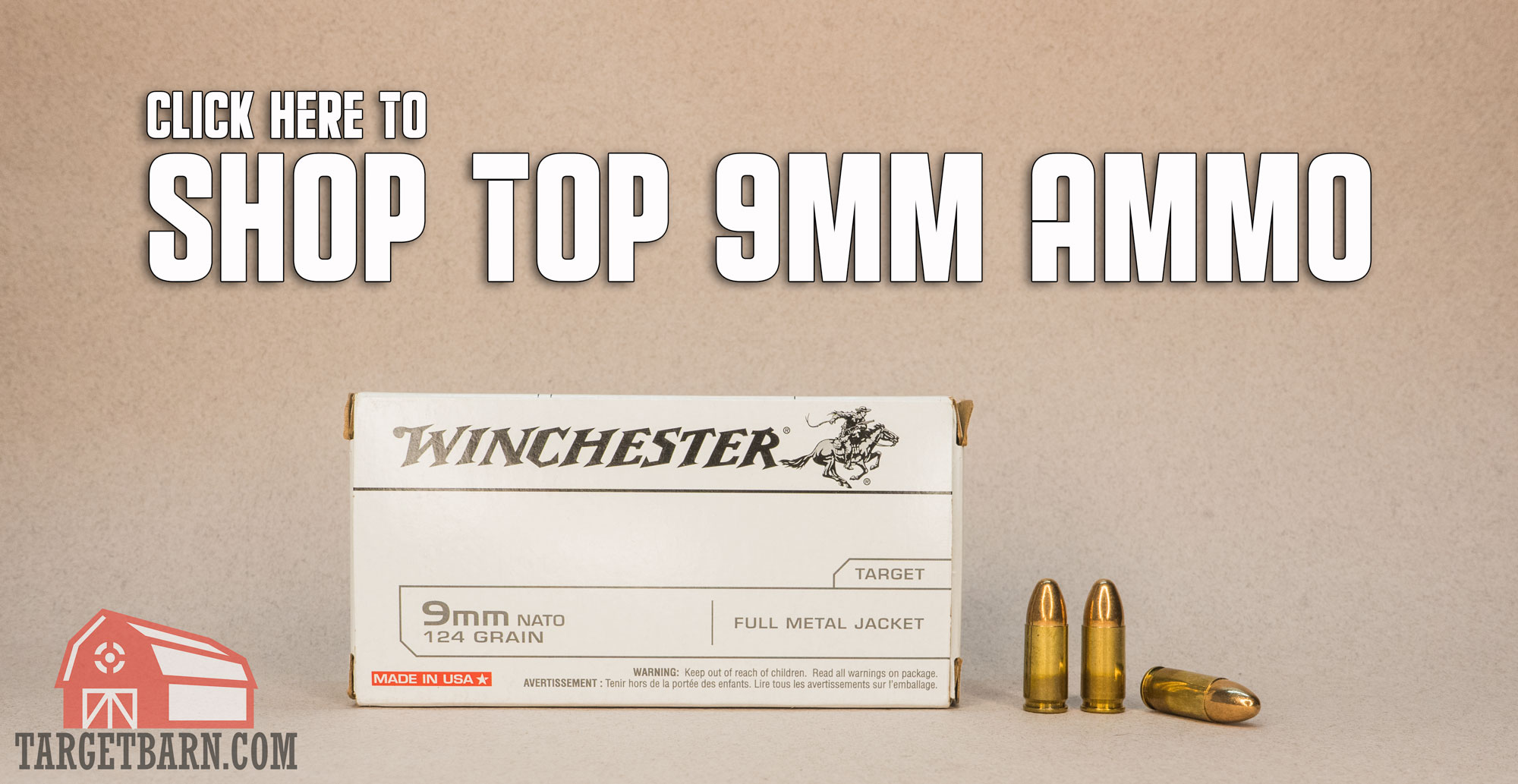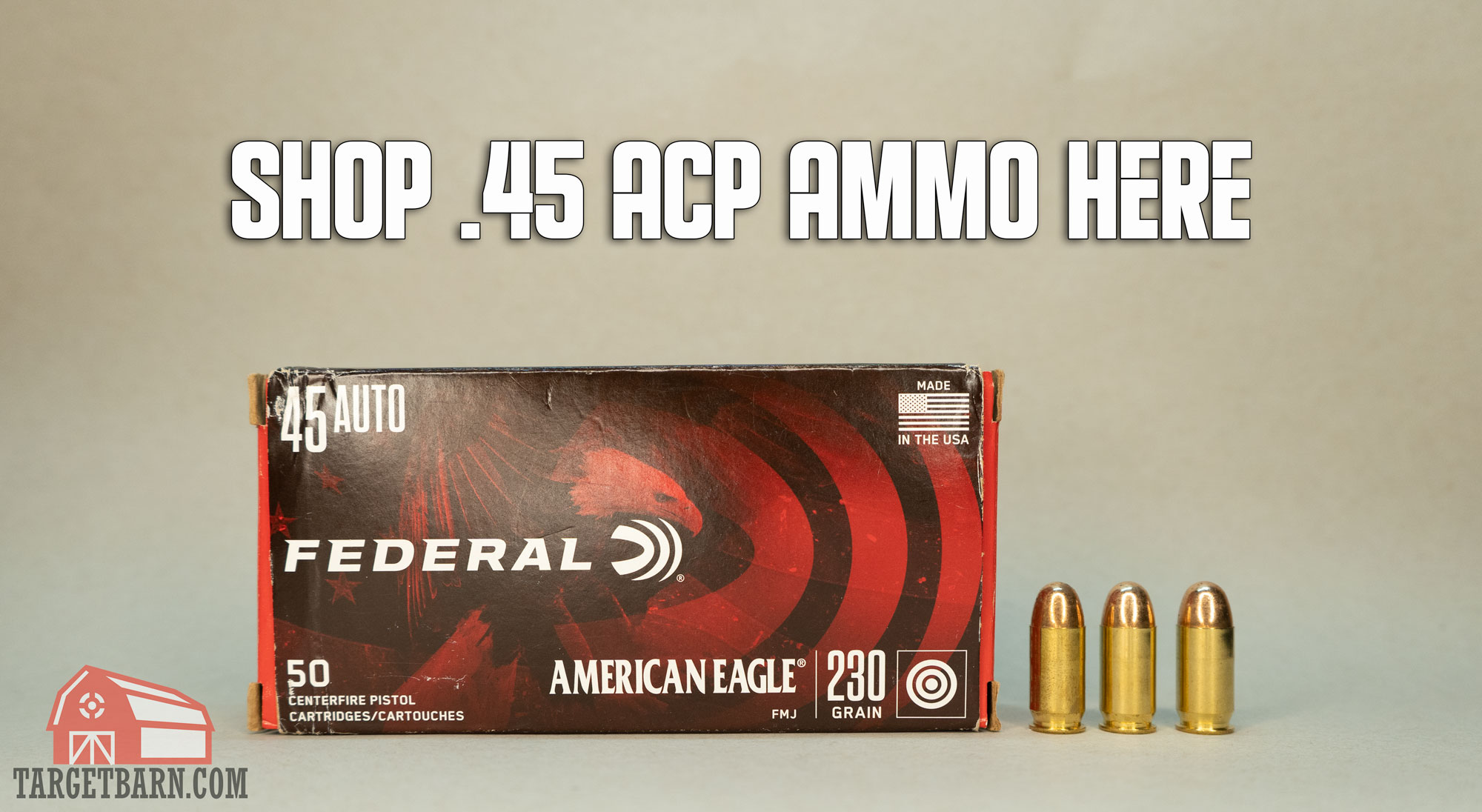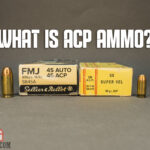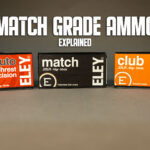The 9mm vs. .45 ACP debate is a contentious one among shooters. These two pistol calibers, created within four years of each other in the early 1900s, have both marked their place as popular defensive rounds in the modern day.
Today we’re taking a look at the two rounds, how they differ, and how they stack up for self defense.
9mm vs. .45 ACP Quick Facts
- The .45 ACP is bigger than the 9mm
- There is no appreciable ballistic or stopping power advantage of the .45 ACP over the 9mm
- 9mm pistols will generally have higher magazine capacities than .45 ACP pistols
- Both rounds are over 120 years old and have been service calibers for militaries and law enforcement agencies across the world
- Common 9mm bullet weights for 9mm rounds range from 115 to 147 grains, and traveling at 900 to 1300 fps velocities
- Common .45 ACP bullet weights range from 185 to 230 grains, and traveling at velocities from 700 to 1100 fps velocities
- 9mm ammo is generally cheaper than .45 ACP ammo
9mm vs. .45 ACP Comparison Chart and Specifications
| 9mm | .45 ACP | |
|---|---|---|
| Place of Origin | German Empire | United States |
| Designer | Georg Luger | John Browning |
| Year Designed | 1901 | 1904 |
| Parent Case | 7.65x21mm Parabellum | |
| Case Type | rimless, tapered | rimless, straight |
| Bullet Diameter | .355" | .452" |
| Case Length | .754" | .898" |
| Maximum Pressure (SAAMI) | 35,000 psi | 21,000 psi |
| Common Velocities | 900-1300 fps | 700-1100 fps |
| Overall Length | 1.169" | 1.275" |
9mm Ammo Specifications
The 9mm is one of the most popular rounds in the country for self defense, fun at the range, and competition. It’s also utilized by the military and law enforcement agencies across the country.
Austrian firearms designer Georg Luger created the round in 1901, derived from his 7.65x21mm Parabellum round.
Common bullet weights for the 9mm range from 115 to 147 grain, with velocities from 900 to 1300 fps. Nearly every major ammo manufacturer produces 9mm ammo, meaning there are tons of ammo options available.
.45 ACP Specifications
The .45 ACP is also a popular handgun round, though its popularity has waned over the years with the growth in popularity of the 9mm round.
Legendary firearms designer John Moses Browning developed the round in 1904 for use in his prototype Colt semi-automatic pistol. The U.S. military eventually adopted the round for use in the Colt M1911 pistol which served as the standard-issue sidearm from 1911 to 1985. The 1911 and .45 ACP round were then replaced by the Beretta M9 pistol chambered in 9mm.
Common .45 ACP ammo loadings have bullet weights ranging from 185 to 230 grains, with velocities ranging from 700 to 1100 fps.
9mm vs. .45 ACP Stopping Power
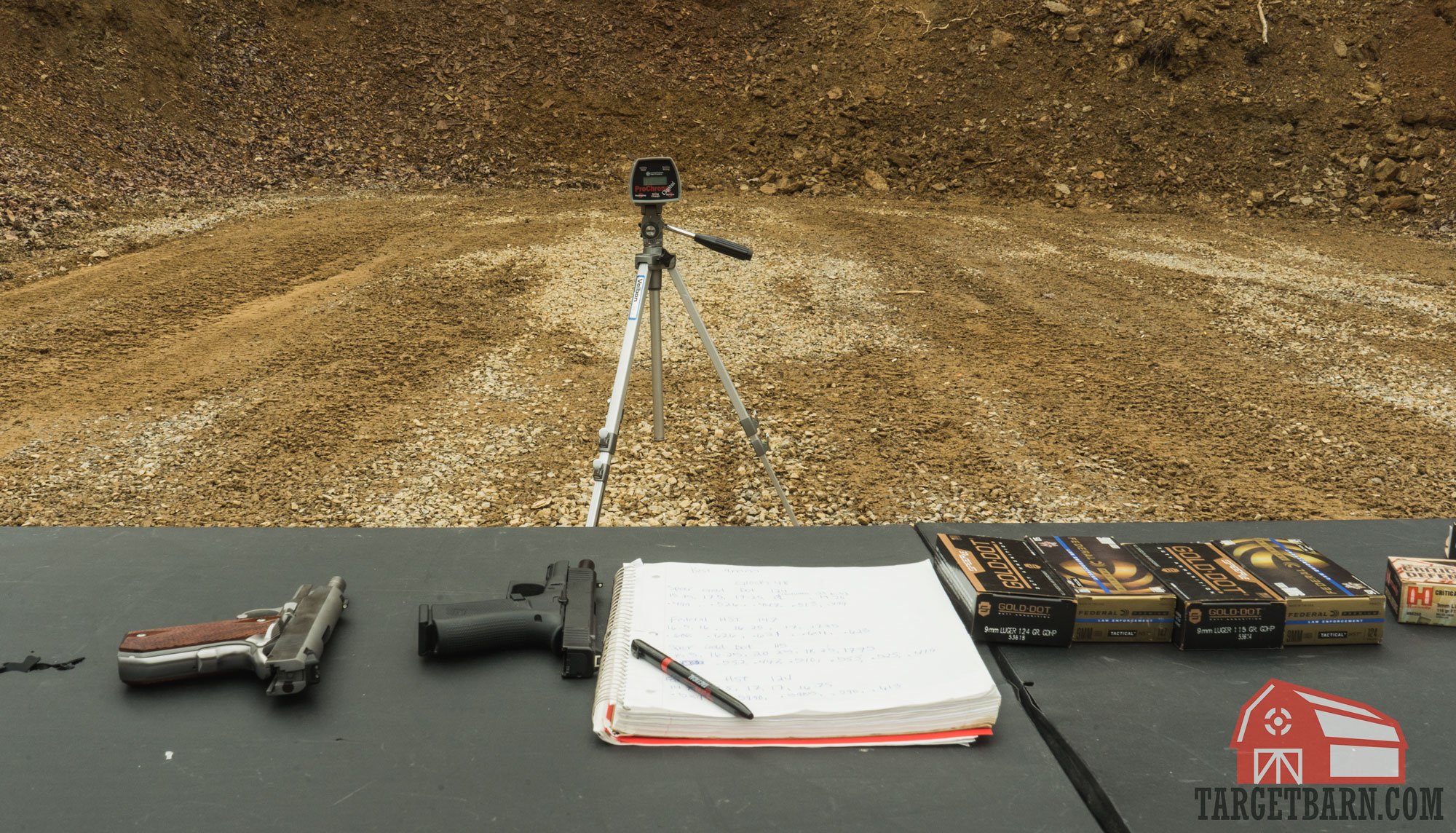
Shooters across the internet love to debate the stopping power of the 9mm vs. .45 ACP. Stopping power is essentially the measure of a cartridge’s ability to incapacitate a target. Unfortunately, stopping power is a highly misunderstood topic in the shooting community.
To answer the 9mm vs. .45 ACP stopping power debate up front: there is no real ballistic advantage to the .45 ACP over the 9mm. According to Vincent J. M. Di Maio in his book GUNSHOT WOUNDS: Practical Aspects of Firearms, Ballistics, and Forensic Techniques, “…there is no appreciable difference in the effectiveness of the 9 mm and the .45 ACP cartridges.”
A handgun cartridge’s one wounding mechanism is direct damage to tissue from the bullet. This differs from rifle cartridges which have the added wounding mechanism of shock to surrounding organs from the bullet passing through.
This means that the only reliable mechanism of stopping someone with a handgun round is to cause rapid blood loss or damage the central nervous system. How do we do this? With good shot placement and a bullet that adequately penetrates deep enough to hit vital organs and expands to cause tissue disruption.
Essentially, shot placement is key when discussing handgun stopping power, and the .45 ACP’s larger size will not prevent you from needing to train with your gun.
9mm vs. .45 ACP Ballistics
| Cartridge | 5-Shot Average Muzzle Velocity | Average Penetration | Average Expansion | Average Muzzle Energy |
|---|---|---|---|---|
| 9mm Hornady Critical Defense 115gr. FTX | 1126 | 12.25 | .501 | 324 |
| 9mm Speer Gold Dot 124gr. JHP | 1068 | 18.625 | .516 | 315 |
| 9mm Federal Premium LE HST 147gr. HP | 933 | 16.25 | .606 | 285 |
| .45 ACP Federal Premium LE 230gr. HST JHP | 849 | 12.875 | .819 | 369 |
| .45 ACP Hornady Custom 200gr. XTP JHP | 845 | 16.375 | .468 | 318 |
| .45 ACP Black Hills 135gr. HoneyBadger | 1132 | 15.375 | .452 | 385 |
Now that we know penetration and expansion are important factors in a pistol round’s ballistic performance, we can see how the 9mm and .45 ACP stack up.
We decided to test a few different 9mm and .45 ACP rounds in ballistic gel to get an idea of how they might perform. Using Clear Ballistic’s 10% synthetic ballistic gel with a 4-layer fabric covering, we fired shots from a 10-foot distance, in line with the FBI’s testing protocol.
We look for penetration depth between 12 and 18 inches, per the FBI’s standards. This correlates with rounds that adequately penetrate and reach vital organs without over-penetrating.
We then dig the expanded bullets out of the ballistic gel to measure their expansion. Rounds that expand create a larger wound channel and prevent over-penetration. While there is no standard for expansion, experts in the field generally look for an expanded diameter of 150% the round’s original size. For 9mm that is .533” and .45 ACP that is .678”.
Keep in mind, these tests just give us an idea of how the rounds might perform and should not be the sole deciding factor when selecting a self defense round.
9mm Ballistic Test
| Cartridge | 5-Shot Average Muzzle Velocity | Average Penetration | Average Expansion | Average Muzzle Energy |
|---|---|---|---|---|
| 9mm Hornady Critical Defense 115gr. FTX | 1126 | 12.25 | .501 | 324 |
| 9mm Speer Gold Dot 124gr. JHP | 1068 | 18.625 | .516 | 315 |
| 9mm Federal Premium LE HST 147gr. HP | 933 | 16.25 | .606 | 285 |
We used a Glock 48 with a 4.17” barrel to test the 9mm rounds.
Of the three rounds tested, the Federal Premium LE HST 147gr. JHP performed the best, penetrating between 12 and 18 inches while expanding greater than 1.5 times the round’s original diameter.
.45 ACP Ballistic Test
| Cartridge | 5-Shot Average Muzzle Velocity | Average Penetration | Average Expansion | Average Muzzle Energy |
|---|---|---|---|---|
| .45 ACP Federal Premium LE 230gr. HST JHP | 849 | 12.875 | .819 | 369 |
| .45 ACP Hornady Custom 200gr. XTP JHP | 845 | 16.375 | .468 | 318 |
| Black Hills 135gr. HoneyBadger | 1132 | 15.375 | .452 | 385 |
We used a Dan Wesson Commander Classic with a 4.25” barrel to test the .45 ACP rounds.
The Federal Premium LE 230gr. HST JHP performed best out of the three rounds tested. With an average penetration of 12.875” and an expansion of .8185”, it met both markers we look for.
The other two rounds both struggled with adequate expansion, which is probably why they penetrated well.
9mm vs. .45 ACP Recoil
One point of advantage of the 9mm is that it has less recoil than the .45 ACP. Of course, a number of factors determine felt recoil, including gun size and weight, but generally speaking, the .45 ACP will have harsher recoil than 9mm.
Lighter recoil can make for easier follow up shots, giving the 9mm round an advantage as a defensive caliber.
9mm vs. .45 ACP Ammo Cost
When it comes to ammo costs, the 9mm has the advantage over the .45 ACP. Range rounds for 9mm can sometimes be found for half the price of .45 ACP range rounds.
9mm vs. .45 ACP Gun Options & Capacities
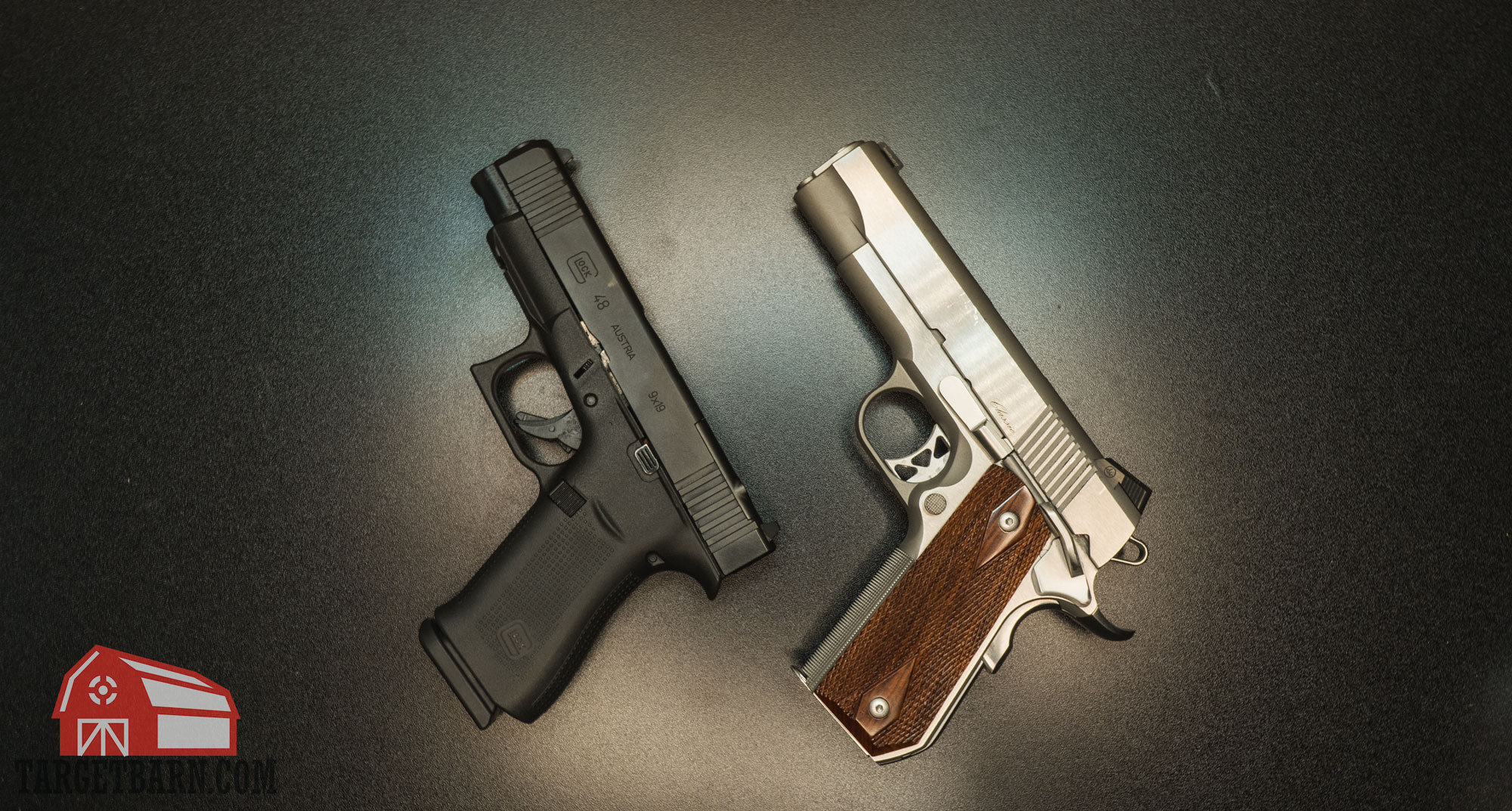
Next, let’s get an idea of the general gun options and magazine capacities you’ll find with the 9mm vs. .45 ACP.
Generally, the 9mm is going to have larger magazine capacities than the .45 ACP because the rounds are smaller. Because we know that shot placement matters, having extra rounds can be a huge advantage.
There are a wide variety of 9mm pistols available. The most popular 9mm pistols for everyday carry are compact and subcompact, striker-fired 9mms with capacities ranging from 6 to 20 rounds.
The classic .45 ACP pistol that most shooters are familiar with is the classic 1911. This single stack, single action, steel-frame handgun has seen two world wars and is still popular today. The classic 1911 has a 5” barrel and a standard capacity of 7 rounds in the magazine plus one in the chamber.
Of course, there are other .45 ACP pistols than the 1911. For example, the Glock 30 and Glock 36 are subcompact pistols chambered in .45 ACP with standard magazine capacities of 10-rounds and 6-rounds, respectively.
Final Thoughts
As we’ve covered, the 9mm cartridge has similar ballistic performance to the .45 ACP, allows you to carry more rounds, has light recoil, and is cheaper than the .45 ACP. It certainly seems like the better option between to the two rounds. That being said, if you’re training with your carry gun and using quality ammo, there’s nothing wrong with .45 ACP being your caliber of choice.
Whether you choose the 9mm or .45 ACP, be sure you head to the range regularly for practice and load up with the best ammo you can!

